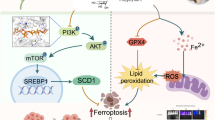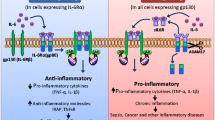Abstract
We have recently reported that β-caryophyllene oxide (CPO) can induce apoptosis, suppress tumor growth, and inhibit metastasis through the suppression of signal transducer and activator of transcription 3, PI3K/AKT/mTOR/S6K1 signaling cascades and ROS-mediated MAPKs activation. In the present study, we found that CPO potentiated the apoptosis induced by tumor necrosis factor α (TNFα) and chemotherapeutic agents, suppressed TNFα-induced tumor cell invasion, all of which are known to require NF-κB activation. We found that TNFα stimulated the expression of gene products involved in anti-apoptosis (IAP1, IAP2, Bcl-2, Bcl-xL, and survivin), proliferation (COX-2, cyclin D1, and c-Myc), invasion (MMP 9 and ICAM-1), and angiogenesis (VEGF) and that CPO treatment suppressed their expression. Because these gene products are also regulated by proinflammatory transcription factor NF-κB, we postulated that CPO may mediate its effects by modulating the NF-κB pathway. We found that CPO blocked both inducible and constitutive NF-κB activation in a wide variety of tumor cells. CPO was also found to inhibit the TNFα-induced degradation of IκBα through the inhibition of activation of IκBα kinase and p65 nuclear translocation and phosphorylation. Interestingly, CPO failed to potentiate the apoptotic effect induced by TNFα in p65 −/− cells as compared to the wild-type. Thus, overall, our results indicate that the inhibition of NF-κB is one of major mechanisms by which CPO enhances TNFα-induced apoptosis and suppresses invasion.




Similar content being viewed by others
References
Newman DJ, Cragg GM (2012) Natural products as sources of new drugs over the 30 years from 1981 to 2010. J Nat Prod 75:311–335
Zheng GQ, Kenney PM, Lam LK (1992) Sesquiterpenes from clove (Eugenia caryophyllata) as potential anticarcinogenic agents. J Nat Prod 55:999–1003
Kubo I, Chaudhuri SK, Kubo Y et al (1996) Cytotoxic and antioxidative sesquiterpenoids from Heterotheca inuloides. Planta Med 62:427–430
Xiao JB, Chen XQ, Zhang YW, Jiang XY, Xu M (2006) Cytotoxicity of Marchantia convoluta leaf extracts to human liver and lung cancer cells. Braz J Med Biol Res 39:731–738
Park KR, Nam D, Yun HM et al (2011) Beta-caryophyllene oxide inhibits growth and induces apoptosis through the suppression of PI3 K/AKT/mTOR/S6K1 pathways and ROS-mediated MAPKs activation. Cancer Lett 312:178–188
Kim C, Cho SK, Kapoor S et al (2013) Beta-caryophyllene oxide inhibits constitutive and inducible STAT3 signaling pathway through induction of the SHP-1 protein tyrosine phosphatase. Mol Carcinog. doi:10.1002/mc.22035
Tung YT, Chua MT, Wang SY, Chang ST (2008) Anti-inflammation activities of essential oil and its constituents from indigenous cinnamon (Cinnamomum osmophloeum) twigs. Bioresour Technol 99:3908–3913
Chao LK, Hua KF, Hsu HY, Cheng SS, Liu JY, Chang ST (2005) Study on the antiinflammatory activity of essential oil from leaves of Cinnamomum osmophloeum. J Agric Food Chem 53:7274–7278
Quintao NL, da Silva GF, Antonialli CS, Rocha LW, Cechinel Filho V, Ciccio JF (2010) Chemical composition and evaluation of the anti-hypernociceptive effect of the essential oil extracted from the leaves of Ugni myricoides on inflammatory and neuropathic models of pain in mice. Planta Med 76:1411–1418
Aggarwal BB (2004) Nuclear factor-kappaB: the enemy within. Cancer Cell 6:203–208
Aggarwal BB (2003) Signalling pathways of the TNF superfamily: a double-edged sword. Nat Rev Immunol 3:745–756
Ghosh S, May MJ, Kopp EB (1998) NF-kappa B and Rel proteins: evolutionarily conserved mediators of immune responses. Annu Rev Immunol 16:225–260
Aggarwal BB, Takada Y (2005) Pro-apototic and anti-apoptotic effects of tumor necrosis factor in tumor cells. Role of nuclear transcription factor NF-kappaB. Cancer Treat Res 126:103–127
Ahn KS, Sethi G, Krishnan K, Aggarwal BB (2007) Gamma-tocotrienol inhibits nuclear factor-kappaB signaling pathway through inhibition of receptor-interacting protein and TAK1 leading to suppression of antiapoptotic gene products and potentiation of apoptosis. J Biol Chem 282:809–820
Baldin V, Lukas J, Marcote MJ, Pagano M, Draetta G (1993) Cyclin D1 is a nuclear protein required for cell cycle progression in G1. Genes Dev 7:812–821
Romano M, Claria J (2003) Cyclooxygenase-2 and 5-lipoxygenase converging functions on cell proliferation and tumor angiogenesis: implications for cancer therapy. FASEB J 17:1986–1995
Yamamoto K, Arakawa T, Ueda N, Yamamoto S (1995) Transcriptional roles of nuclear factor kappa B and nuclear factor-interleukin-6 in the tumor necrosis factor alpha-dependent induction of cyclooxygenase-2 in MC3T3-E1 cells. J Biol Chem 270:31315–31320
Esteve PO, Chicoine E, Robledo O et al (2002) Protein kinase C-zeta regulates transcription of the matrix metalloproteinase-9 gene induced by IL-1 and TNF-alpha in glioma cells via NF-kappa B. J Biol Chem 277:35150–35155
van de Stolpe A, Caldenhoven E, Stade BG et al (1994) 12-O-tetradecanoylphorbol-13-acetate- and tumor necrosis factor alpha-mediated induction of intercellular adhesion molecule-1 is inhibited by dexamethasone. Functional analysis of the human intercellular adhesion molecular-1 promoter. J Biol Chem 269:6185–6192
Ferrara N, Hillan KJ, Gerber HP, Novotny W (2004) Discovery and development of bevacizumab, an anti-VEGF antibody for treating cancer. Nat Rev Drug Discov 3:391–400
John A, Tuszynski G (2001) The role of matrix metalloproteinases in tumor angiogenesis and tumor metastasis. Pathol Oncol Res 7:14–23
Johnson JP (1991) The role of ICAM-1 in tumor development. Chem Immunol 50:143–163
Liotta LA, Thorgeirsson UP, Garbisa S (1982) Role of collagenases in tumor cell invasion. Cancer Metastasis Rev 1:277–288
Bonizzi G, Piette J, Merville MP, Bours V (1997) Distinct signal transduction pathways mediate nuclear factor-kappaB induction by IL-1beta in epithelial and lymphoid cells. J Immunol 159:5264–5272
Bharti AC, Donato N, Singh S, Aggarwal BB (2003) Curcumin (diferuloylmethane) down-regulates the constitutive activation of nuclear factor-kappa B and IkappaBalpha kinase in human multiple myeloma cells, leading to suppression of proliferation and induction of apoptosis. Blood 101:1053–1062
Gasparian AV, Yao YJ, Kowalczyk D et al (2002) The role of IKK in constitutive activation of NF-kappaB transcription factor in prostate carcinoma cells. J Cell Sci 115:141–151
Miyamoto S, Maki M, Schmitt MJ, Hatanaka M, Verma IM (1994) Tumor necrosis factor alpha-induced phosphorylation of I kappa B alpha is a signal for its degradation but not dissociation from NF-kappa B. Proc Natl Acad Sci USA 91:12740–12744
Ghosh S, Karin M (2002) Missing pieces in the NF-kappaB puzzle. Cell 109(Suppl):S81–S96
Kaneda N, Pezzuto JM, Kinghorn AD et al (1992) Plant anticancer agents, L. cytotoxic triterpenes from Sandoricum koetjape stems. J Nat Prod 55:654–659
Ryu NH, Park KR, Kim SM et al (2012) A hexane fraction of guava Leaves (Psidium guajava L.) induces anticancer activity by suppressing AKT/mammalian target of rapamycin/ribosomal p70 S6 kinase in human prostate cancer cells. J Med Food 15:231–241
Yoon WJ, Moon JY, Kang JY, Kim GO, Lee NH, Hyun CG (2010) Neolitsea sericea essential oil attenuates LPS-induced inflammation in RAW 264.7 macrophages by suppressing NF-kappaB and MAPK activation. Nat Prod Commun 5:1311–1316
Acknowledgments
This work was supported by the Korea Science and Engineering Foundation (KOSEF) grant funded by the Korean Ministry of Education, Science and Technology (MoEST) (No. 2011-0006220).
Conflict of interest
The authors have no conflicts of interest to disclosure.
Author information
Authors and Affiliations
Corresponding authors
Additional information
Chulwon Kim and Somi K. Cho have contributed equally to this study.
Rights and permissions
About this article
Cite this article
Kim, C., Cho, S.K., Kim, KD. et al. β-Caryophyllene oxide potentiates TNFα-induced apoptosis and inhibits invasion through down-modulation of NF-κB-regulated gene products. Apoptosis 19, 708–718 (2014). https://doi.org/10.1007/s10495-013-0957-9
Published:
Issue Date:
DOI: https://doi.org/10.1007/s10495-013-0957-9




